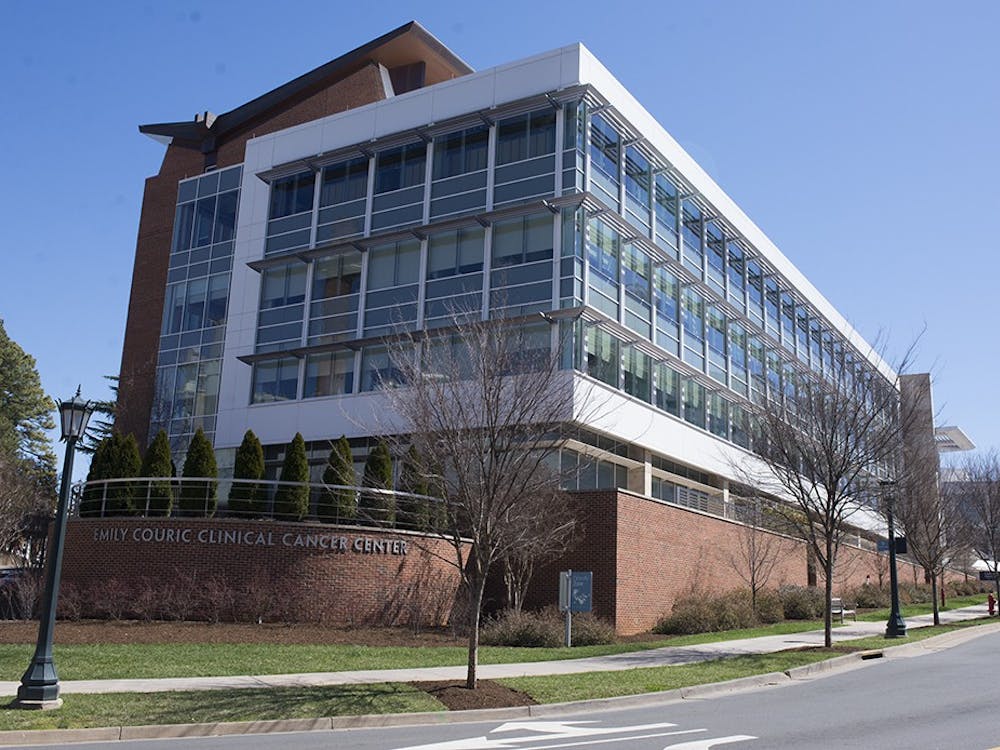About one month ago, for the first time in three years, a University student was admitted to the University hospital and diagnosed with bacterial meningitis. Although the student has since recovered, meningitis remains a dangerous infection, especially for college students, who are four to five times more likely to contract bacterial meningitis than the general population.
According to the Centers for Disease Control and Prevention, meningitis, also known as spinal meningitis, is an infection of the spinal fluid and the fluid that surrounds the brain. There are two types of meningitis: bacterial and viral. Viral meningitis is the more common type of meningitis and is more benign, usually lasting between four to six days, University Student Health Director James Turner said. Bacterial meningitis, however, is known to be much more severe than the viral variety and requires hospitalization and antibiotics. It can sometimes leading to hearing loss, brain damage, learning disability or death.
According to the CDC, Haemophilus influenzae type b used to be the main cause of bacterial meningitis before the 1990s, until new vaccines were developed and administered to children during routine immunizations. Today, the CDC names Streptococcus pneumoniae and Neisseria meningitidis as the leading causes of bacterial meningitis.
“There are much milder symptoms with viral meningitis,” University Student Health Director James Turner said. “The patient does not look as sick clinically, does not have as much of a headache or stiff neck that comes with bacterial meningitis. People with bacterial meningitis are usually very ill. They can develop confusion, go into coma or shock and have low blood pressure.”
The CDC also notes that some common signs and symptoms of meningitis include, but are not limited to, high fever, headache, stiff neck, nausea, vomiting, discomfort looking into bright lights, confusion and sleepiness. It has been suggested that these signs are not as noticeable in children less than two years of age, however, and other symptoms in younger children may include inactivity, irritability, vomiting and poor eating. Another indication of meningitis may be seizures, which are more likely to occur as the infection progresses.
“If you think you have symptoms consistent with meningitis, you should see a doctor immediately,” Turner said.
A doctor determines whether a patient has contracted meningitis by performing a spinal tap procedure, through which a long needle is inserted into the lower back to remove spinal fluid, according to the CDC. The doctor will prescribe certain antibiotics depending on the specific strand of meningitis; beginning treatment early can reduce one’s likelihood of death by 15 percent. Turner noted that the individual cannot distinguish between viral and bacterial meningitis, so it is necessary that one visit a doctor if he or she is experiencing any meningital symptoms.
Delaying an appointment with the doctor can also cause meningitis to spread more rapidly to others as some types of bacterial meningitis are contagious.
“Five to 10 percent of healthy people carry it in their nose and throats, yet never get sick,” Turner said. “They can pass it to other people through kissing, coughing, sharing drinks and cigarettes. When someone is exposed, it gets into their bloodstream and causes them to become sick.”
Bacterial meningitis, however, is not as contagious as the common cold or flu, according to the CDC. Thus, those at high-risk only include people in the same household or close contact — meaning those in direct contact with the infected person’s oral secretions.
According to the CDC, there are vaccines available for many types of meningitis; these vaccines prevent four types of the meningococcal disease, including two of the three most common in the United States. Vaccination is recommended by the CDC at the routine preadolescent visit, high school entry and college.
“Immunization only prevents 70-80 percent of strains of bacterial meningitis,” Turner said. “Meningococcus has five strains, and only four are prevented by immunization. There is no vaccine available for viral meningitis.”
Turner said Virginia state law requires the immunization. A University-wide e-mail sent to students and faculty after the student was admitted into the hospital reported that 95 percent of University students have received the vaccine.
Other than vaccination, Turner suggests common sense and personal hygiene as a means of protecting oneself from meningitis.
“Get rest, take care of yourself, don’t smoke, don’t drink heavily,” he said. “Things such as having a cold, heavy alcohol consumption and exhaustion can weaken the immune system and make someone more prone to meningitis. People that are born with immune problems are also more predisposed to the disease.”
Other high-risk persons include microbiologists frequently exposed to the bacteria, United States military recruits, persons with damaged spleens, persons with terminal complement component deficiency and those traveling to high-risk countries, according to the CDC. Although the U.S. is not a high-risk country, people traveling to foreign countries, like students studying abroad, are encouraged to receive vaccination one week prior to departure.
“From bacterial meningitis, there is an upwards 15 percent mortality and 20 percent of those that survive have complications such as an amputation, kidney failure or brain damage,” Turner said.
For more information, Turner suggests going to the American College Health Association website, ACHA.org.






